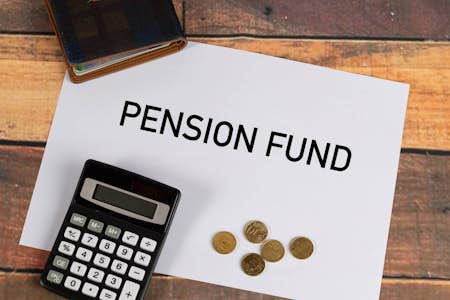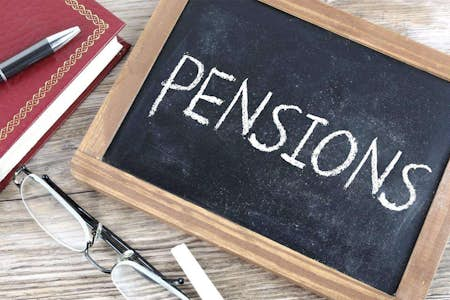Pension earmarking is part of the process by which assets are split when a marriage or civil partnership fails. It is important to note that pension earmarking is also referred to as "pension attachment". While ex-partners often arrange an out-of-court settlement to save expense and time, this is not possible with pension earmarking- pension earmarking can only be agreed upon by the courts.
Maximise your retirement fund with our panel of pension providers. Click on your chosen provider to get started!
When did pension earmarking become law?
The Pension Act 1995 included regulations regarding pension earmarking and additional provisions to the Matrimonial Causes Act 1973. These additions involved settling marital/civil partnership assets, including pension assets, in England and Wales. As a result, pension earmarking laws came into effect in England and Wales in July 1996 and Scotland and Northern Ireland the next month.
It is important to note that pension earmarking is not the same as pension sharing. There is a "clean break" when it comes to pension sharing, while pension earmarked assets will remain within the member’s pension fund.
Is ownership of pension assets transferred under pension earmarking?
No. At least until pension benefits are taken, all assets under a pension earmarking ruling will be owned by the original member. The pension fund’s trustees will be informed of the pension earmarking order and advised about future action. For example, if the member tried to transfer pension assets elsewhere before benefits were taken, the trustees would tell the ex-spouse or ex-partner.
The original pension earmarking ruling must also be passed to the new trustees to be aware of the situation. As pension trustees act independently from the pension member, there is no split loyalty, and they are legally obliged to respect the pension earmarking ruling. One point of interest, when the member has decided to take benefits, their ex-partner can then transfer their share of pension assets elsewhere. Many people wonder why the regulations don’t allow the split of assets as part of the separation settlement.
What happens when all pension assets are earmarked?
It is worth mentioning the potentially bizarre scenario where a pension earmarking court order could allocate 100% of pension assets to a former partner. Even though the original pension member will not benefit from any of the pension assets, they will still own them until they decide to take “their” pension benefits. This creates a scenario where the pension member may not act in the best interests of their former partner.
Which assets are impacted by pension earmarking?
It is important to note that all pension assets at the time of separation will be considered when deciding the level of pension earmarking. Interestingly, where the allocation of assets was on a percentage basis, pension earmarking will also take advantage of future contributions and funds growth after the separation date. Consequently, many people may prefer a pension sharing order as opposed to a pension earmarking ruling.
Current regulations give the courts power to make pension earmarking orders against part or all the following pension benefits:
- Tax-free lump sum
- Income payable upon taking pension benefits
- Lump-sum payable on death before taking pension benefits
Pension earmarking regulations do not cover the state pension and will not be considered when apportioning pension assets. Numerous different assets can be held within a pension fund. Some of these may be easier to liquidate than others, impacting the timescale in which benefits are paid.
Do all parties have a say on pension fund investment strategy?
This is where it all starts to get very confusing. Even though the pension earmarking order allocates a percentage of a pension fund explicitly to an individual, they have no control over how the funds are invested. Consequently, the pension fund member may have a very different investment strategy to their ex-partner. In theory, this could have a significant impact on the level of funds available after separation.
While it would be a case of “cutting your nose off to spite your face”, nothing is stopping the original member from instigating a high-risk investment strategy. While unlikely, difficult separations can prompt individuals to take unusual action.
Who decides when pension benefits should be paid?
There is concern and confusion regarding the commencement of pension benefits. Under pension earmarking regulations, it is the original member that will decide as to when pension benefits are paid. If they are still in employment in their later years, they may choose to delay pension benefits beyond the retirement age. This may not sit well with their ex-partner and could potentially leave them financially exposed.
So, we have the original pension member in charge of investment strategy and their pension payments and those of their ex-partner. Where there has been and continues to be friction between the warring parties, this could lead to financial hardship.
What is the tax situation regarding pension earmarking payments?
You might be forgiven for assuming that pension benefit payments to an ex-partner would see them covering their own tax bill. No. In a situation that is sometimes difficult to comprehend, the original member will be charged tax on payments to their ex-spouse. The tax liability will be deducted from the ex-partner’s pension payment and sent to HMRC. This is where it starts to get interesting!
Somewhat bizarrely, the tax due on the ex-partners share of pension benefits will be charged at the original member’s tax rate. The tax deduction at source is not a problem, as it would need to be paid at some point. However, it is perfectly feasible to have a situation where each party pays a different tax rate. For example, the ex-partner may be a basic rate taxpayer, while the pension member could be a high rate taxpayer. So, in this scenario, the ex-partner could be seriously out of pocket.
What happens when the pension member dies before benefits are taken?
If the pension member dies before benefits are taken, this can affect payments to their ex-partner. The following would apply:
- Pension earmarking involving the tax-free lump sum element would lapse
- Pension earmarking involving pension payments would lapse
- Pension earmarking involving the lump sum payable on death would be paid
Where a pension member has taken out adult survivor’s pension cover, then a legal spouse or civil partner will receive a pension on their death. Where the survivor is not recognised as a civil partner or spouse, an element of discretion is given to the pension trustees. In theory, a former partner could be recognised as a dependent and receive additional payments on their death.
Can pension earmarked assets be transferred elsewhere?
Pension funds, including earmarked assets, can be transferred to another pension trustee. However, the beneficiary of the pension earmarking order must be advised of the proposed change by law. This ensures that they know the location of their share of assets, and they must be kept informed going forward.
Once benefits have commenced, the ex-partner can transfer their share of pension assets to another trustee. In this scenario, they would take full ownership of their share of pension assets and future investment strategy. Whether this is too little too late is a reasonable argument.
How do earmarked benefits impact lifetime allowances?
Those who follow the pension industry will be aware of lifetime allowances, additional tax charges and penalties. Each individual has a lifetime allowance, effectively the maximum amount you can build up in your pension fund without incurring additional tax charges. Many might automatically assume where pension earmarking is in play, that the share of pension benefits and assets would be deducted from each individual’s lifetime allowance. Unfortunately, this isn’t the case.
All assets and payments will be offset against the member’s lifetime allowance, leaving the ex-partner untouched. It isn’t easy to comprehend why relevant deductions are not made from each party’s own lifetime allowance. Then again, on the flip side, if the lifetime allowance was split, we may see separations of convenience.
How common are pension earmarking orders?
Where a divorce petition was filed on or after 1 December 2000, this opens the option for a pension sharing order. However, it is not difficult to see several fundamental flaws in the pension earmarking powers, such as ownership and timing of benefits. Consequently, most pension earmarking orders were approved between 1996 and 2000, before the introduction of pension sharing powers.
It would be best to take professional advice when looking to split assets after a parting of the ways. Whether you are a pension member or an ex-partner, you need to protect your entitlement.
Varying a court order
While there are ways in which a pension earmarking order can be varied, you would need to present a strong argument for the courts to agree. Consequently, this highlights the vast importance of professional financial and legal advice when pursuing a pension earmarking or pension sharing order. Thankfully, simplistic pension sharing orders are much more commonplace today.
They offer a means of a "clean break" between the two parties, thereby reducing the control that one party may have over the pension benefits of the other. They have certainly cleaned up some of the anomalies with pension earmarking orders!
Is pension earmarking something of a halfway house?
It isn’t easy to comprehend why a pension earmarking order allocates a pension fund percentage (or actual amount) to a former partner, with little protection. The original pension member controls the investment strategy, legally owns all of the pension assets, and ultimately decides when the benefits are taken. In theory, but surely not in practice, a high-risk investment strategy could potentially wipe out all pension fund assets. What, if any, legal action a beneficiary could take is unclear. It may be an idea to seek professional guidance.?







